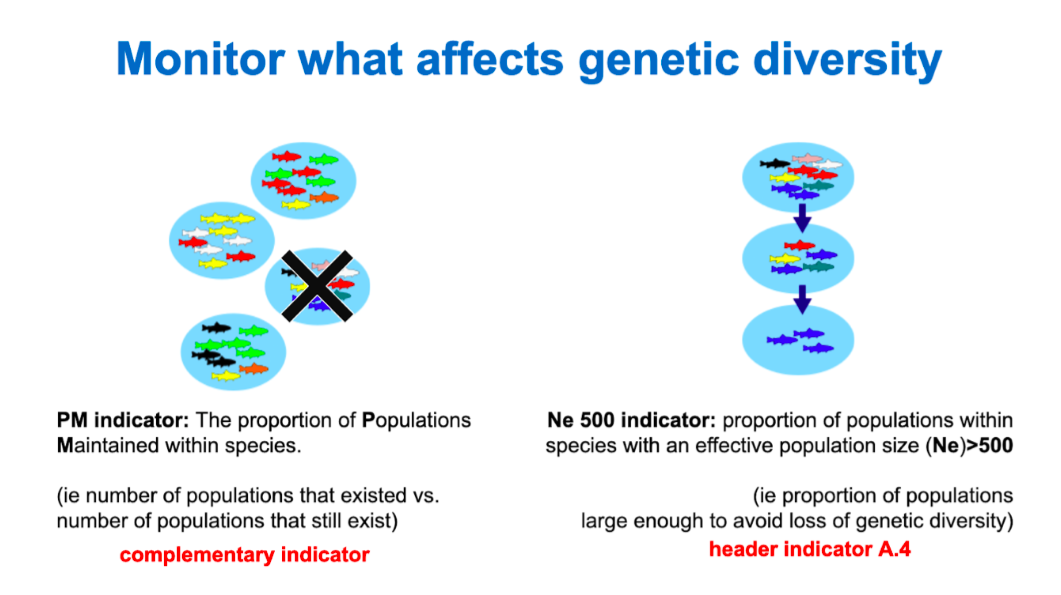Genetic diversity and indicators
Genetic diversity is variation at the DNA level, and includes differences among individuals within populations of species, as well as differences between populations of species.
Within populations: the diversity within populations of a species helps a population adapt quickly to changing conditions, avoid inbreeding problems, and persist when environmental disturbances occur. Small populations will tend to lose genetic diversity more rapidly than large populations.
Between populations: the diversity between populations of a species is critical for ensuring the adaptive potential of that species (e.g. to a range of environmental conditions). Loss of any unique, genetically distinct populations can compromise a species’ ability to adapt to change (anthropogenic or otherwise).
It is therefore crucial that all populations be maintained, and that populations are sufficiently large to maintain genetic health. Based on these fundamental premises, we can assess and monitor genetic diversity not only using genetic data, but also by assessing loss of populations and population sizes relative to Ne 500–in other words, by monitoring the processes that affect genetic diversity. The genetic diversity indicators adopted at COP15 by the Global Biodiversity Framework are based on these processes.

Visualization of two genetic diversity indicators in the Global Biodiversity Framework. The complementary Populations Maintained (PM) indicator (left) estimates genetic diversity among populations of a species. Different populations may have different adaptive traits or properties (denoted by the different colors) that enable them to survive in their current situation, and helps the species persist in the face of environmental change. The loss of one population can therefore reduce the adaptive potential of a species. The headline Ne 500 indicator (right) estimates diversity within populations to ascertain their ability to survive in the long-term. Populations with an effective population size (Ne) less than 500 lose genetic diversity more rapidly, making them less resilient to environmental changes and more susceptible to inbreeding when compared to populations with Ne greater than 500, which are considered more stable.
Although there are no global, standardized databases for reporting the number of species’ population and their census sizes, this information is available for many species in various other sources (e.g., reports, national databases, scientific literature, government gazettes, expert consultation, community science, etc.). This guidance document will help you gather and use the necessary data from diverse sources in a standardized way (see Data Collection).